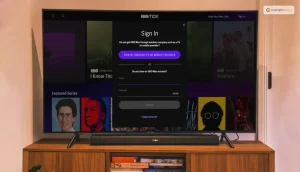Augmented reality is anticipated to grow rapidly in the upcoming year of 2020. The augmented reality experience will transform the e-commerce industry with the ability to provide an immersive and enhancing the shopping experience for its customers. Statistics state that the integration of augmented reality technology in apps and websites would want customers to spend more on a product.
Consequently, this allows retailers an open opportunity to give a competitive edge over its aggressive competitors. It will likely generate more sales and revenue, higher conversion rates, and the number of goods sold on e-commerce platforms. The following are several reasons to amalgamate augmented reality experience e-commerce.

- Visualize Purchases
Augmented reality apps help users visualize elements that are then influenced by the decision to whether to buy a product or not. This proves advantageous to owners who want to get an overall view of what something will look like beforehand. For instance, buying a home and choosing what furniture to purchase can be decided through the use of an app that can position visual elements according to customer preference before making any big purchase. This allows customers to get a real look at how the home will look like concerning factors such as color matching, wall positioning, spacing, and many other elements.
- Revitalize the Shopping Experience
It can be quite a hassle for clients to try out different clothing in trial rooms and finding out the best one, is a daunting and time-consuming task. Augmented reality provides a better way for customers by just placing themselves in front of a functioning mobile camera and they can see visual graphical clothing placed on them despite heading towards the changing room. This makes the app experience fun and engaging to the audience by allowing trying various categories of clothing. Many e-commerce stores such as Sephora’s visual artist app are fantastic for online beauty shoppers. Elements such as eyelash thickness, cheek color, and other elements can help females decide what the best on the look.
- Online Personalization
The level of personalization is likely to increase that will, as a result, increase online customers in parallel with increased profits as well. In the upcoming years, eCommerce web development services will produce tools that will allow customers to try what looks the best on them and firms can gather insights, body sizes, and style preferences to offer better products accordingly. Instead of portraying online models wearing the clothing, augmented reality will offer customers to try the outfits over them without even heading to the retail story saving time and reduced effort.
- Practical Examples of AR
Amikasa is an augmented reality e-commerce app that allows redesigning a home according to your style and preference using furniture from real brands. It proves to be a great tool for buyers who want to restructure their homes from scratch. It offers functionalities such as furniture placement, changes product colors, views furniture as if being placed in reality in your home. It allows the home to be designed in a fully unified look. A buyer will already know what elements go together with each other or those that don’t. Visualizing the final look of a home will ensure the home is designed exactly as the user pictured in his mind.
- Augmented Reality Tools in E-Commerce
Augment is an augmented reality tool that enables a user to view the product in real-time. Wherever someone wants to view their product can see the visual product rotated and placed, better visualizing it in a natural setting. The tool provides users with an interactive and engaging experience, having a great selection of choices, and finding the best location for your product to be placed is all possible with this creative application. Some more examples of these apps are total immersion, Marxent labs all leading towards the same purpose.
- Real In-Store Experience
Many shopaholics enjoy in-store purchases due to the feeling that shopping physically offers. So when online retailers use augmented reality technologies they elevate the experience to a level that was unforeseen a few decades back. AR makes it possible for customers to try out various brands and also give a sense of comfort without stressing out to spend hours looking for your favorite choice where augmented reality has better effective and efficient solutions across the retail sector.
Conclusion
Augmented reality seems to be prevalent in the future, maximizing and making a breakthrough across different sectors for example healthcare, education, e-commerce. Taking e-commerce development into context, investors spend huge sums of money in digital marketing services due to it being a necessity and also increasing opportunities for better sales and numerous revenue in the future. And by integrating augmented reality with e-commerce raises the bar for firms, to leap ahead in the competition. A time will also come when artificial intelligence, AI and augmented reality will merge to create a unified application, opening up numerous pathways of how we perceive things.








